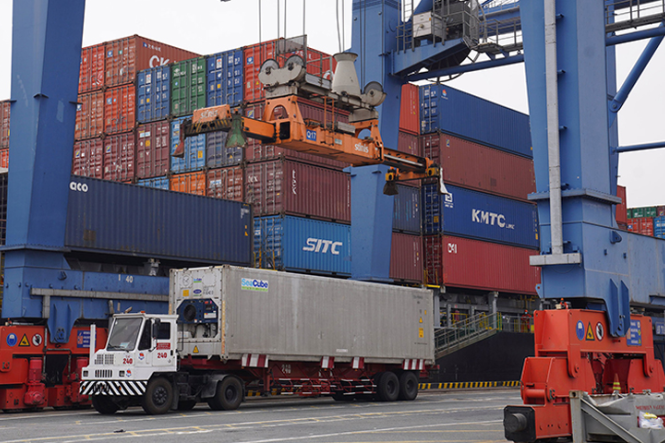
Shipping lines sharply reduce surcharges in line with sea freight rates.
The surcharges that shipping lines collect from shippers are currently trending downwards, in line with freight rates. According to the latest price quotation from the shipping line Yang Ming regarding adjustments to international sea freight prices and surcharges at Vietnamese seaports, not only have year-end sea freight rates seen a decline, but the carriers’ surcharges are also trending down, especially the fuel surcharge.
Specifically, the fuel surcharge for the South Asia region decreased from 8 million VND/40-foot container in October to 6.5 million VND/40-foot container from November 2022. The fuel surcharge for the Red Sea region decreased from 12.09 million VND/40-foot container to 9.8 million VND/container. Similarly, the surcharge for a 40-foot container in the Red Sea region was 17.4 million VND in October, now reduced to 14.2 million VND.
Not just Yang Ming, according to a sea transport enterprise, many companies are sharply reducing freight rates to compete for cargo during these difficult times.
According to this enterprise, current regulations require most sea transport companies to publicly list their freight rates and report them to state management agencies. However, “they have many ways to reduce prices, including sharply cutting various surcharges,” this representative stated.
Mr. Nguyen Thanh Cuong, Deputy General Director of Vfracht Da Nang Transport and Chartering JSC, said that many shipping lines have now reduced surcharges, even lumping them into the freight rate for their price quotes.
Mr. Cuong analyzed that during periods of high freight rates, shipping lines often separated surcharges from the base rate. Typically, for routes from Vietnam to China, the THC (Terminal Handling Charge) is about 120 USD/20-foot container and 180 USD/40-foot container. Meanwhile, the fuel surcharge also fluctuated around 150-300 USD/20-foot container.
But now, many shipping lines have bundled the surcharges with the freight rate for cargo from Vietnam to some Chinese ports. Accordingly, the announced rate fluctuates at just over 100 USD/20-foot container.
“Production has stagnated, and consumer markets have shrunk, leading to a decline in transport demand. Shipping lines have to lower their rates to compete for cargo,” the Vfracht Da Nang leader commented.

According to Freightwaves, bunker adjustment factors (fuel surcharges) are rapidly decreasing as carriers switch to fuel cost-saving measures.
Specifically, Zim’s bunker adjustment factor from the US West Coast to Asia will be 32% lower in Q1 2023 compared to Q4 2022, dropping to 720 USD per 40-foot container. Evergreen’s US West Coast – Asia surcharge peaked in Q3 2022 but could fall by 41% in the near future.
On the US East Coast – Asia route, the bunker adjustment factor for the shipping line Cosco will decrease by 21% from Q3 2022 to Q1 2023, down to 1,425 USD/FEU. The surcharge for CMA CGM is also projected to fall by 21% from Q4 2022 to Q1 2023, down to 1,098 USD/FEU.
Source: Giao Thong (Transport) Newspaper.
